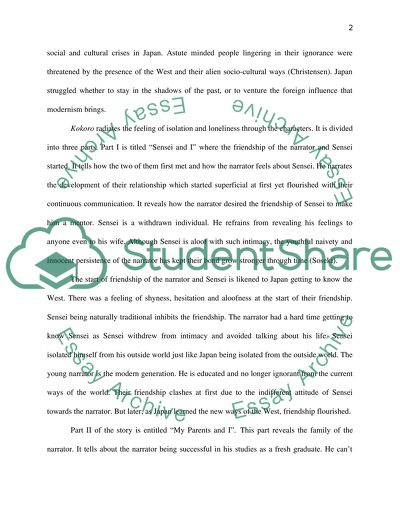Cite this document
(“Kokoro by Natsume Soseki Research Paper Example | Topics and Well Written Essays - 1250 words”, n.d.)
Retrieved from https://studentshare.org/literature/1490815-kokoro-by-natsume-soseki
Retrieved from https://studentshare.org/literature/1490815-kokoro-by-natsume-soseki
(Kokoro by Natsume Soseki Research Paper Example | Topics and Well Written Essays - 1250 Words)
https://studentshare.org/literature/1490815-kokoro-by-natsume-soseki.
https://studentshare.org/literature/1490815-kokoro-by-natsume-soseki.
“Kokoro by Natsume Soseki Research Paper Example | Topics and Well Written Essays - 1250 Words”, n.d. https://studentshare.org/literature/1490815-kokoro-by-natsume-soseki.


